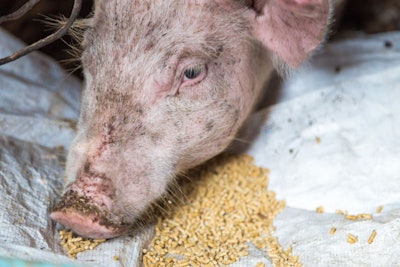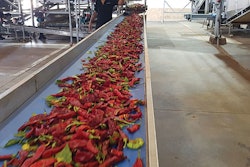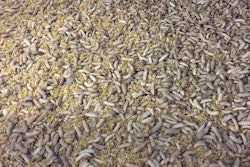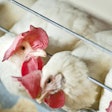
Potential anti-viral soy isoflavone may reduce PRRS mortality, but reason why remains unclear
Research points to isoflavones, a component found in soybean meal, as a potential anti-viral animal feed additive, but a new study suggests the full story could be more complicated.
In the study, published in the May edition of the Journal of Animal Science, a team of Illinois scientists infected pigs with porcine reproductive and respiratory syndrome (PRRS) virus and then fed some a diet containing soy-derived isoflavones. Although the group that received the supplement experienced half as many fatalities, it’s not clear that isoflavones were solely responsible, according to Ryan Dilger, an associate professor of animal science at the University of Illinois.
Isoflavones are flavonoid compounds derived from soybeans and are thought to have anti-inflammatory, antibacterial and anti-viral properties in humans. Dilger and his research team have been studying whether the anti-viral effects may also extend to pigs experiencing respiratory illness when infected with the PRRS virus.
An unintended discovery in 2010 suggested soybean meal may play a role in protecting swine against viral infection. Animals in a study of swine lysine requirements incidentally contracted PRRS, allowing researchers to observe that pigs fed soybean meal maintained better growth performance than the pigs fed a diet containing crystalline lysine. This led to a hypothesis that something in the soybean meal helps pigs fight off the disease.
This latest isoflavone study was designed to test whether the soy compounds changed the bacteria living in the pigs’ colon in a way that promoted health. But Dilger and his collaborators found minimal difference in microbial profiles between the pigs that received isoflavones and those that did not; the PRRS virus itself seemed to be responsible for changes to the gut microbiota.
Because the supplement appeared to reduce the number of pigs that died from PRRS by half during the trial — which Dilger acknowledged involved a relatively small number of animals — there is still evidence that something within soybean meal may enable pigs to fight viral infections. But isoflavones may not act alone, or it could be another component of the soybeans — amino acids, for example — are an important nutrient for supporting the immune response.
“Our conclusion is isoflavones are only part of the story. There has to be something else going on,” Dilger said, adding that further research is necessary to explore the specific compounds or conditions responsible for the positive health outcome, and to provide further validation of potential anti-viral effects at scale.
Soy isoflavone remains a potentially interesting anti-viral feed additive, Dilger said, thanks to the fact that soybean products are already available to producers. Isolated soy-derived isoflavone products are produced to human health standards, making them relatively expensive, but increasing soybean meal in feed may be an inexpensive means of promoting swine health.
“It’s a simple way to get some protection against a virus,” Dilger said. “Simple and practical.”















